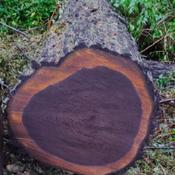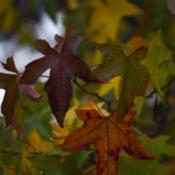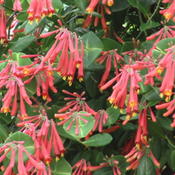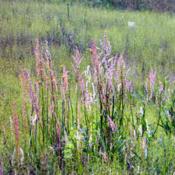| Image | Plant | Status | Notes | Events |
|---|---|---|---|---|
 |
Great Burdock (Arctium lappa) |
Want (Absolute must-have)Medicinal Native Plant Edible |
||
 |
Trumpet Vine (Campsis radicans) |
Have Invasive (or Potentially) Favorite/Butterflies Native Plant Favorite/Hummingbirds |
||
 |
Carolina Jessamine (Gelsemium sempervirens) |
Have Favorite/Hummingbirds Native Plant |
Several volunteer specimens are growing in my planned garden area. Some will have to be moved. | |
 |
Black Walnut (Juglans nigra) |
Want (Absolute must-have)Medicinal Native Plant Edible/Fruit |
||
 |
Wild Lettuce (Lactuca canadensis) |
Have Medicinal Native Plant Edible |
This specimen is around 10' tall so far, without any fertilizer of any sort. The top is high into the limbs of the sweetgum tree as of late June, so it will likely grow taller. | |
 |
American Sweetgum (Liquidambar styraciflua) |
Have Native Plant |
||
 |
Honeysuckles (Lonicera) |
Have Invasive (or Potentially) Favorite/Butterflies Native Plant Favorite/Bees Favorite/Hummingbirds Favorite/Birds |
||
 |
Honeysuckle (Lonicera periclymenum) |
Have Invasive (or Potentially) Favorite/Butterflies Native Plant Favorite/Bees Favorite/Hummingbirds Favorite/Birds |
The nectar can be extracted by removing the flower and pinching the green base off, being careful to avoid breaking the stamen, which can then be gently pulled back through the tube of the flower like a piston, collecting the necter in a tiny drop that appears at the flower's base. This is quickly brought to the tongue, a hard-won but delightful treat for children. White flowers turn yellow as they age, then fall off the vine. Red berries, slightly toxic to humans, are favored by birds. |
February 12, 2019: Bloomed (Observed a branch of blooms already, some several days old--old enough to have already turned yellow. I was surprised to see them so early.) |
 |
Coral Honeysuckle (Lonicera sempervirens) |
Want (Love to have)Favorite/Hummingbirds Favorite/Birds Native Plant Favorite/Butterflies |
||
 |
Sweet Bay Magnolia (Magnolia virginiana) |
Want (Love to have)Edible/Spice Native Plant |
||
 |
Pokeweed (Phytolacca americana) |
Have Edible Native Plant Favorite/Birds |
"Poke Salad" leaves are edible but potentially poisonous if not cooked properly. Berries poisonous to humans, but favored by birds. Berries can be used to make ink or dye. | |
 |
American Sycamore (Platanus occidentalis) |
Have Favorite/Butterflies Favorite/Bees Native Plant Favorite/Birds |
||
 |
Wild Blackberry (Rubus cochinchinensis) |
Have Invasive (or Potentially) Native Plant Edible/Fruit |
||
 |
Sheep's Sorrel (Rumex acetosella) |
Want (Absolute must-have)Medicinal Native Plant Edible |
||
 |
Lyreleaf Sage (Salvia lyrata) |
Have Native Plant |
Wild native specimens in full sun on my 10 acres show dark purple leaves; also found in my lawn. I plan to transplant to pots before transferring them to the back garden after landscaping. | |
 |
Sassafras (Sassafras albidum) |
Want (Absolute must-have)Medicinal Edible/Spice Favorite/Butterflies Native Plant Favorite/Bees Edible Favorite/Birds |
||
 |
Spiderwort (Tradescantia virginiana) |
Have Native Plant |
I plan to transplant several of these from my 10 acres to my back garden after landscaping. |